
8 minute read
33rd
Harry S. Truman was born on May 8, 1884 in Lamar, Missouri, though hew grew up in nearby Independence . His parents gave him the middle initial S. to honor Harry’s two grandfathers, though it stands for nothing in particular. As a child, Harry enjoyed playing the piano and reading. He worked on the Santa Fe Railroad following graduation from high school. Although he never earned a college degree, he became a successful Missouri farmer and served as a Captain in World War I. In 1919, he married Bess Wallace, seven years after she rejected his first request. The couple would have a single child named Mary Margaret. In 1919, Harry and a wartime friend opened a haberdashery in Kansas City. The business went bankrupt during the recession of 1921.
Truman’s political career began in 1922 when he was elected as judge of the County Court of the eastern district of Jackson County, Missouri. During this time, Truman was instrumental in the development of Kansas City, Missouri and helped initiate programs that built roads, buildings, and monuments in the city. In 1934, he was elected Senator from Missouri. During his second term as Senator, Truman established the “Truman Committee” which exposed military spending fraud during World War II. Truman’s committee is thought to have saved the United States Military over 15 billion dollars and launched his political career into the national limelight.
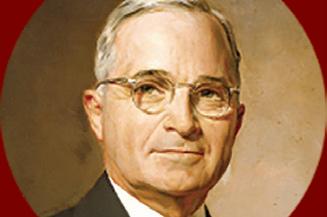
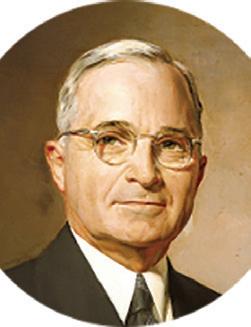
In 1944, Truman was selected as President Franklin D. Roosevelt’s vice-presidential running-mate during the election of 1944, though Truman reluctantly accepted. Roosevelt died on April 12, 1945 after suffering a stroke and Truman was sworn in as President.
Truman’s presidency began in the latter stages of World War II. After being briefed on the top secret Manhattan Project (the testing of Nuclear Weapons), Truman authorized the use of nuclear weapons against Japan, after Japan refused to surrender in the Potsdam Declaration. American military forces dropped two nuclear bombs on August 6, 1945 over the cities of Nagasaki and Hiroshima , marking the first and only time nuclear weapons had ever been used in warfare. Tens of thousands of Japanese were killed instantly and Japan surrendered eight days later.
In 1948, after the Democratic
Harry S. Truman
Party seemed ready to split, and after Truman signed a controversial order integrating the U.S. Armed Forces, he was re-elected president in an improbable victory, prompted at least in part, by his incredible campaign effort which covered nearly 22,000 miles in traveling.
In 1949, Truman was instrumental in the establishment of NATO (the North Atlantic Treaty Organization) which established alliances with Canada and much of western and northern Europe in opposition to the growing Communist threat of the Soviet Union. Nevertheless, Truman’s popularity began to wane as the Soviet Nuclear program rapidly developed amidst allegations that Truman’s administration was harboring Soviet spies (the resulting paranoia concerning Communists in the U.S. Government and Russian spies would be forever referred to as McCarthyism). In 1950, Communist North Korea invaded South Korea prompting the
Korean War. Truman’s handling of the war was heavily criticized, particularly his decision to fire the popular World War II hero Douglas MacArthur from his command in Japan and Korea. Although the two-year war cost over 30,000 American lives, Truman succeeded in preventing the war from becoming a major international struggle between surrounding Communist nations such as China and the Soviet Union. Truman declined to run for re-election in 1952.
President Harry Truman led the US at the beginning of the Cold War with the Soviet Union and set the stage for post-WWII American foreign policy. Containing Soviet influence and geopolitical expansion became the known as the Truman Doctrine and led to the formation of NATO and US intervention in the Korean War.
Wednesday, March 21 – 7:00
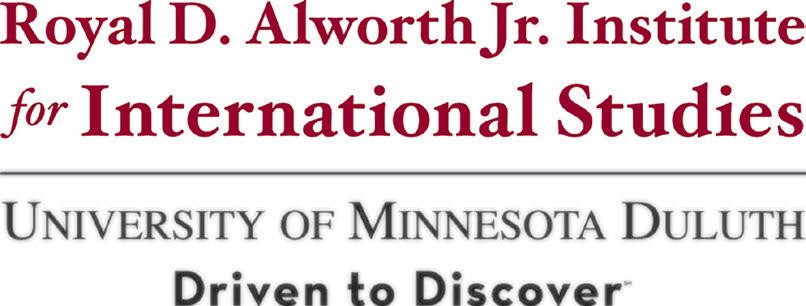
Wednesday,
Wednesday,
Dwight D. Eisenhower was a commander during World War II and the 34th President of the United States. He was born in Denison, Texas, in 1890, the third of seven sons. The family moved to Abilene, Kansas, when Dwight was two years old. In 1911, Eisenhower enrolled in the United States Military Academy. He graduated in 1915.
In 1917, Eisenhower was promoted to captain. Three years later he was promoted to major. Although Eisenhower’s military career stagnated for the next two decades, he served as chief military aide to Douglas MacArthur from 1933 to 1935. Eisenhower’s great organizational and leadership skills were finally recognized during World War II when he was given command of the Mediterranean Theater of Operations and North African Theater of Operations. In these positions, he oversaw allied invasions of Italy and Sicily. In 1943, he was appointed Supreme Allied Commander in Europe. Here, Eisenhower was in charge of the invasion of Normandy Beach, France, the liberation of Western Europe, and the invasion of Germany. On December 20, 1944, Eisenhower was named General of the Army. Following the war, Eisenhower won numerous military and international awards.
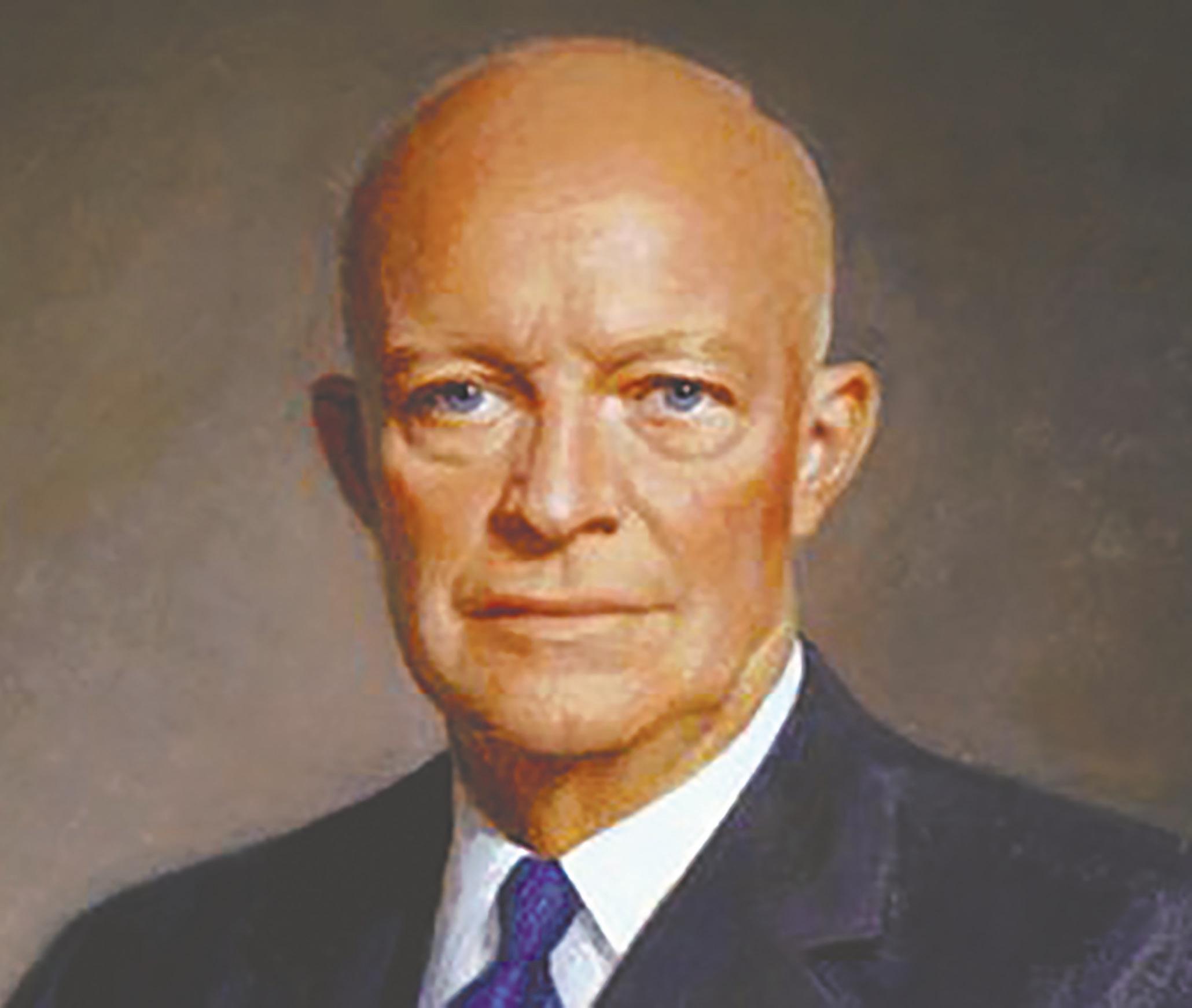
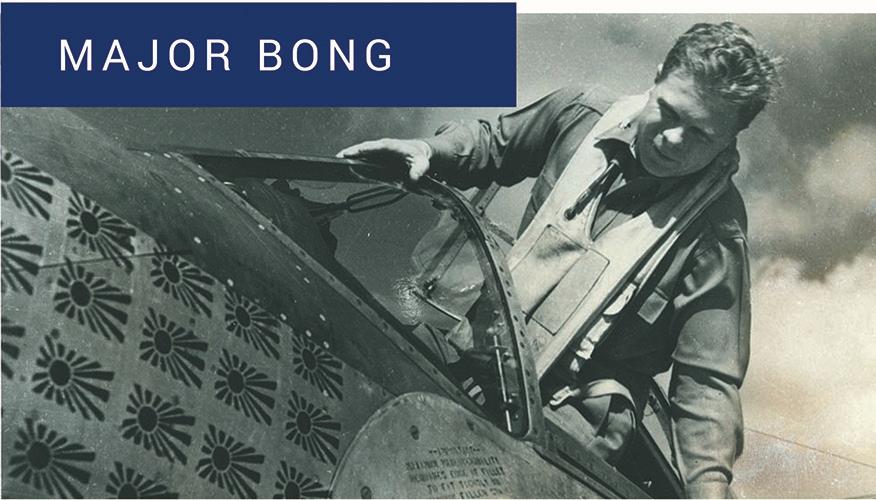
President Truman in 1951 publicly asked Eisenhower to run as a Democrat. After voicing his disagreements with the Democratic Party Eisenhower declared himself and his family to be Republicans. In the general election, against the advice of his advisers, Eisenhower insisted on campaigning in the South, refusing to surrender the region to the Democratic Party. The campaign strategy, dubbed “K1C2”, was to focus on attacking the Truman and Roosevelt administrations on three issues: Korea, Communism and corruption. He defeated Democratic candidate Adlai Stevenson II in a landslide, with an electoral margin of 442 to 89, marking the first Republican return to the White House in 20 years.
As president, he negotiated a peace treaty ending the Korean War. Eisenhower signed the Civil Rights Act of 1957 and sent Army troops to enforce federal court orders that integrated schools in Little Rock, Arkansas. He opposed Joseph McCarthy by openly invoking executive privilege. His largest program was the Interstate Highway System. He promoted the establishment of strong science education via the

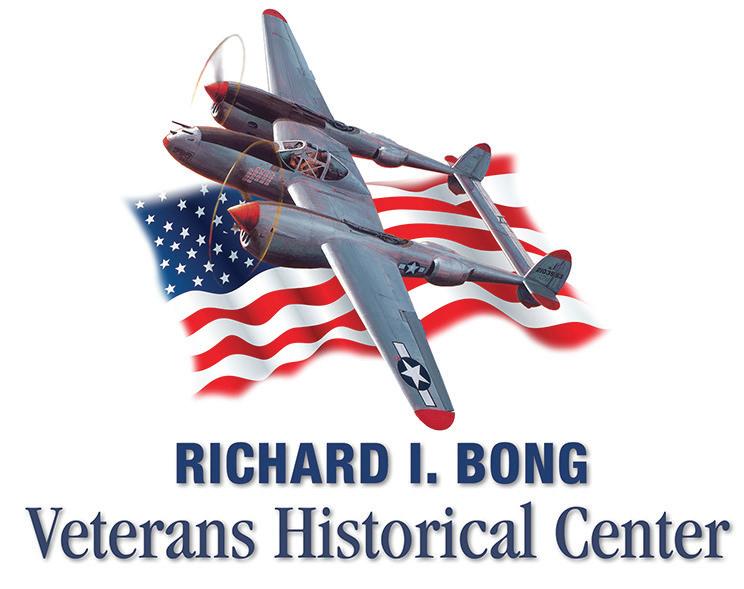
National Defense Education Act. In his farewell address to the nation, Eisenhower expressed his concerns about the dangers of massive military spending, particularly deficit spending and government contracts to private military manufacturers.

John Fitzgerald Kennedy was born in Brookline, Massachusetts, on May 29, 1917. He was one of nine children. His siblings were Joe, Rosemary, Kathleen, Eunice, Patricia, Robert, Jean, and Teddy. His mother was Rose Fitzgerald Kennedy and his father was Joseph Patrick Kennedy. The Kennedys were a wealthy, well-connected family, and John attended Choate, a prestigious private boarding school for adolescent boys in Connecticut. He was very popular and had many friends. He played tennis, basketball, football, and golf and also enjoyed reading. In 1936, John enrolled at Harvard University in Cambridge, Massachusetts.

John entered the Navy after graduating from Harvard in 1940. On August 2, 1943, John’s PT 109 patrol boat was hit by a Japanese destroyer, killing two of his men. John managed to save himself and several others in the wreckage. He was awarded the Navy & Marine Corps Medal for leadership and courage.
Kennedy’s political career began soon after World War II. In 1946, he was elected to the Massachusetts 11th congressional district. The popular Kennedy served three terms in the House of Representatives and was elected to the US Senate in 1952. Soon after his election, he married twenty-four-year-old Jacqueline Bouvier, a writer for the Washington Times-Herald. They had two children, Caroline and John-John. In 1960, Kennedy decided to run for president and became the Democratic Party candidate. He chose Texas Senator Lyndon B. Johnson as a running mate to gain support in the southern states. In September and October of 1960, Kennedy and Republican nominee Richard M. Nixon engaged in the first-ever televised presidential candidate debates.
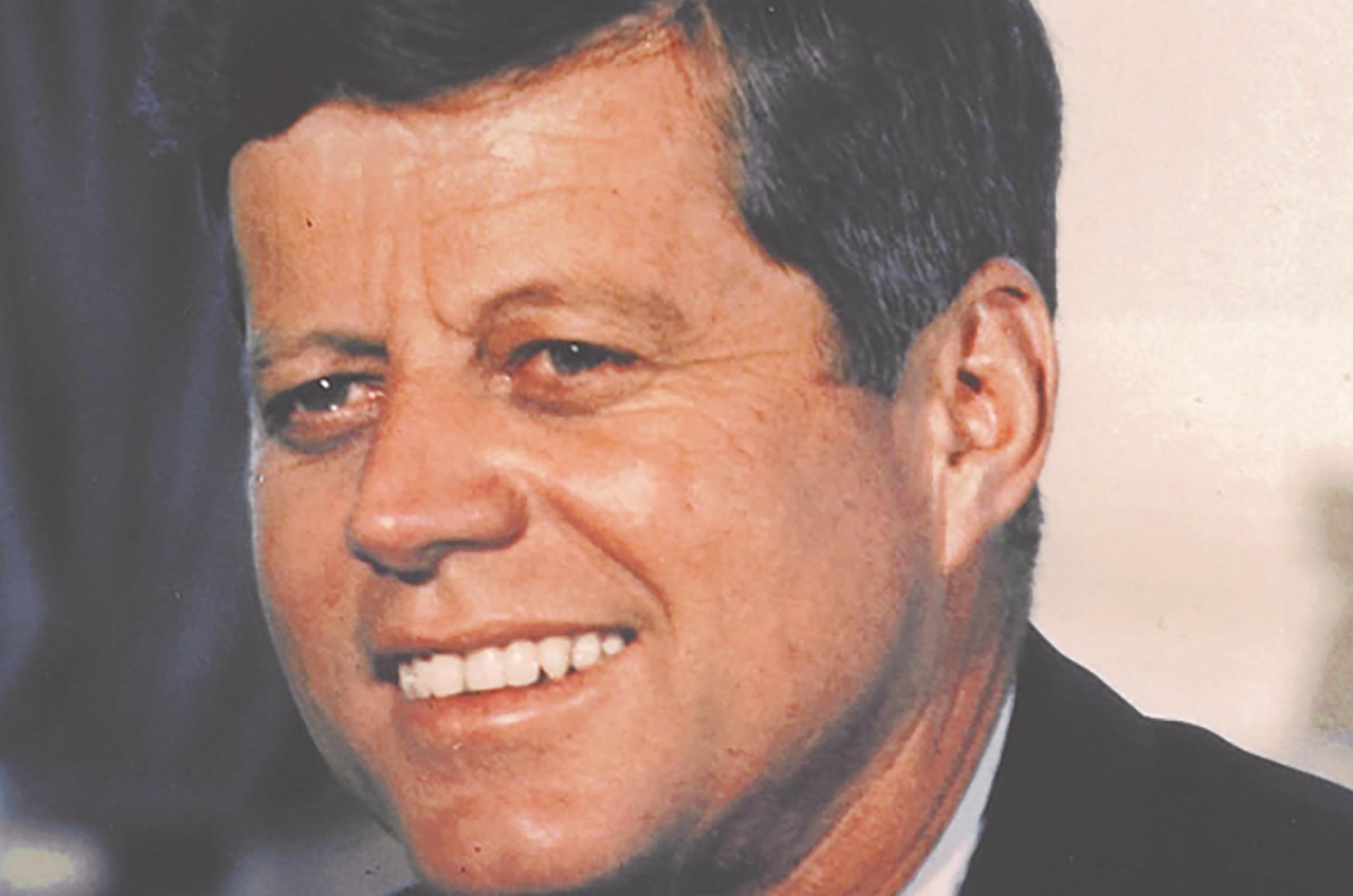
On November 8, 1960, Kennedy defeated Nixon for the presidency by an estimated two-tenths of one percent of the vote in one of the closest races in American history. In 1961, at 43 years of age, John F. Kennedy was sworn in as the 35th president of the United States. In his inaugural address, he stressed the importance of citizenship and uttered the famous quote “Ask not what your country can do for you; ask what you can do for your country.”
His presidency got off to a rough start in 1961 with the infamous failure of the Bay of Pigs invasion. In an attempt to overthrow the Communist regime of Cuban leader Fidel Castro, US military forces suffered an embarrassing defeat at the hands of the Russian-trained
Cuban military. In 1962, Kennedy faced what came to be known as the Cuban Missile Crisis. Russia was attempting to position nuclear warheads in Cuba only 90 miles off the coast of Florida. President Kennedy ordered a naval blockade of all ships bound for Cuba. It was a tense time as the world teetered on the verge of nuclear war. Fortunately, Russia withdrew the missiles and agreed to sign the Nuclear Test Ban Treaty.
President Kennedy created Project Apollo, which paved the way for American space exploration. He also guided the nation through the difficult period of desegregation. In the early 1960s, President Kennedy challenged students to serve their country in the pursuit of peace by assisting developing countries. As a result, the Peace Corps was created.
On November 22, 1963, in Dallas, TX, President John F. Kennedy was shot and killed by Lee Harvey Oswald while riding in a motorcade. It was one of the most shocking news events in the history of the United States. Millions of people mourned. Only two days later, on November 24, 1963, Jack Ruby shot Lee Harvey Oswald dead.
John F. Kennedy will forever live on in the hearts of Americans. Since his death, he has been honored by numerous cities and organizations. The Kennedy Center for the Performing Arts in Washington, DC, and the Kennedy Space Center were named for him. He has also appeared on numerous postage stamps as well as the US half-dollar.
Lyndon Baines Johnson was born in 1908 in Stonewall, Texas. He grew up relatively poor and worked his way through Southwest Texas State Teacher’s College. After spending time teaching students of Mexican descent, he became interested in politics and successfully campaigned for the House of Representatives with the help of his wife, Lady Bird Johnson, in 1937. Johnson served six terms in the House of Representatives and spent time as a lieutenant commander during World War II. In 1948, he was elected to the Senate and soon became the youngest minority leader in Senate history. He then became the youngest majority leader.
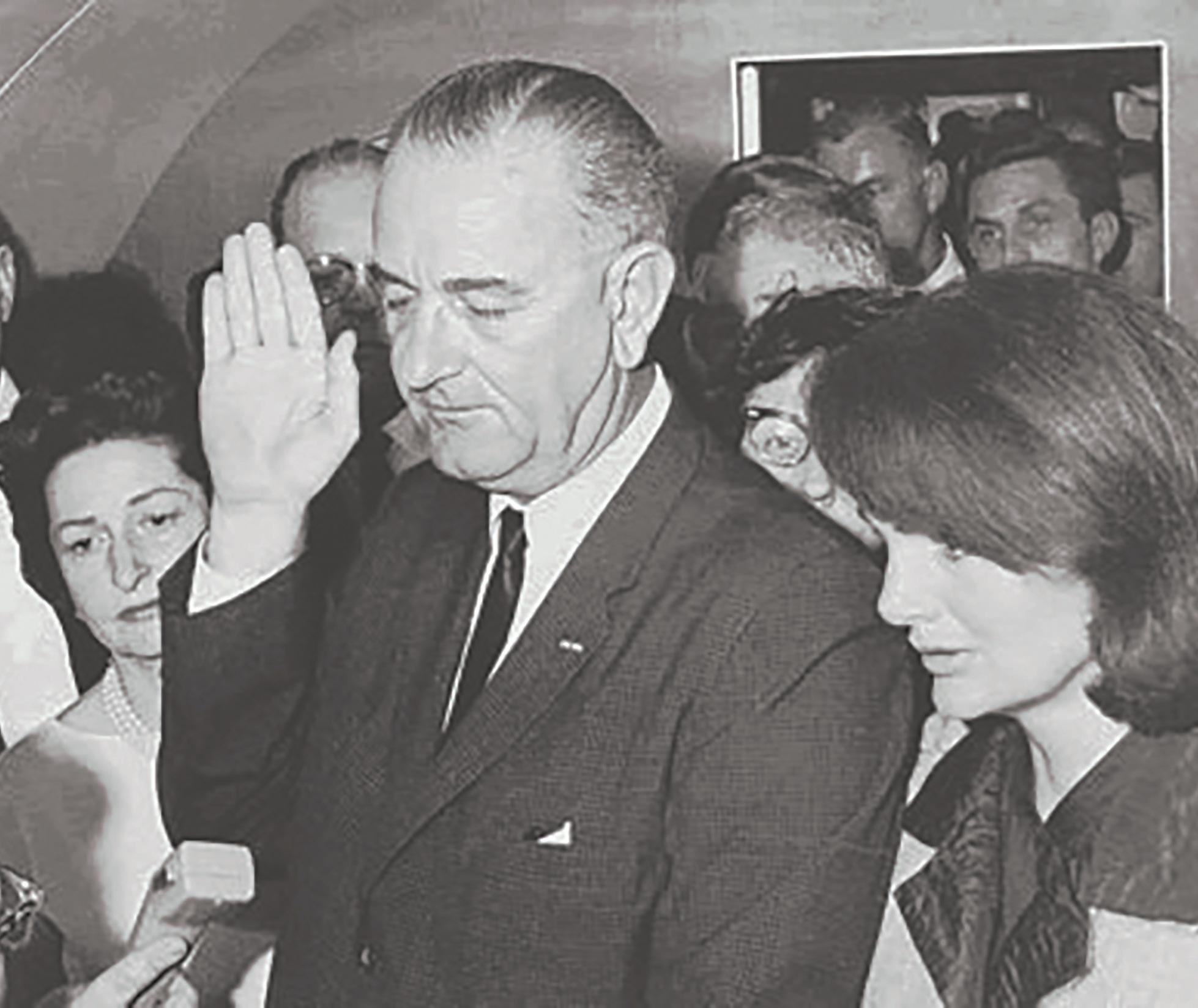
Johnson’s success in the Senate rendered him a potential Democratic presidential candidate. He had been the “favorite son” candidate of the Texas delegation at the Party’s national convention in 1956 and appeared to be a strong contender in 1960. Johnson made a late entry into the campaign in July 1960 which, coupled with a reluctance to leave Washington, allowed the rival Kennedy campaign to secure a substantial early advantage among Democratic state party officials. According to Kennedy’s Special Counsel Myer Feldman and to Kennedy himself, it is impossible to reconstruct the precise manner in which Johnson’s vice-presidential nomination ultimately took place. Robert F. Kennedy reportedly hated Johnson for his personal attacks on the Kennedy family, and later maintained that his brother offered the position to Johnson merely as a courtesy, expecting him to decline. Most likely the offer was made to secure the Southern Democrats, most of

Lyndon Baines Johnson
whom backed Johnson.
On November 22, 1963, President Kennedy was assassinated, and Johnson was sworn in as America’s 36th president. Johnson successfully advocated a tax cut for the public and a new Civil
Rights Bill. He also spoke to the populace of a “Great Society” in which the meaning of life and the “marvels” of man’s labor were one and the same. In 1964, Johnson was re-elected by the widest margin in American history.
Johnson’s next term included improvements to the education system and social security, measures to reverse widespread poverty, disease, and crime, as well as measures to facilitate foreign relations and conservation.
Johnson’s second term, however, was plagued by the escalating situation in Vietnam, which soon became the Vietnam War. Despite his popularity, Johnson decided not to run for a third term as president so he could devote all of his time to establishing peace.










